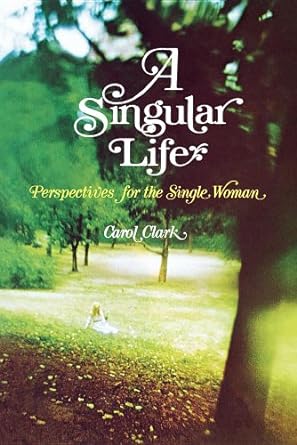Articles/Essays – Volume 09, No. 2
A Spiritual Map for Singles | Carol Clark, A Singular Life: Perspectives For Single Women
This slim, significant volume is to date the best of the self-help books published for LDS single women. It succeeds largely because of Carol Clark’s unique grasp of gospel principles as they relate to even the most practical aspects of single life and because of her frank, empathetic analysis of singles problems not discussed previously by Mormon authors.
In a chapter titled “Where Do I Go From Here?” Carol Clark writes with unusual insight of the concern which many single women feel as opportunities to marry diminish steadily after college age. This comes as “a cold slap in the face to some, only to be followed by the statistical truth that some women never marry in this life.” Miss Clark suggests confronting this truth with the help of two meaningful questions: “What do I do with myself?” and “What do they (home teachers, ward members) do with me?” Her responses set the tone for a series of mini-lectures—each a chapter—which implore single women to “choose life” (Deuteronomy 31:19) rather than loneliness or bitterness.
Many single women will identify closely with these problems and others discussed throughout the book: the social dilemma of the single woman who is more accomplished or better educated than most of the men she knows; the “back row syndrome . . . another convenient crutch for the woman who is older than most single women in her ward, and hence, placed in an even more obtuse position by well-meaning people who don’t know how to include her”; the temptation in periods of loneliness and self-doubt to accept undesirable companionship from married or single men. As solutions to these and other problems, Miss Clark offers her own deeply thoughtful analysis, a wealth of well-chosen and inspiring scriptures, and the comments of many single women who have successfully overcome obstacles in their lives.
Some of the most enjoyable features of the book are its succinct, almost epi grammatic bits of wisdom which are bound to be quoted frequently: “The goal is not to wait for the right person, but to be the right person”; “The career dilemma is not so much related to marriage as it is to a lack of interest in excellence as a goal in any pursuit”; “The single person must determine how she and the principle, not the practice of marriage, can work together gracefully for an indefinite period of time.”
Another major strength of A Singular Life is the manner in which Miss Clark discredits some of the erroneous romantic beliefs about marriage which flourish among young women and are often reinforced by their elders. She exposes as fallacies the ideas that the best and only necessary preparation for marriage is a full social calendar, that life and happiness really begin only in marriage, and that if only “The Man” were around the money worries, electrical breakdowns, job troubles and loneliness of single life would magically vanish.
If there is any weakness in the book, it is only that there should be more of it. Some sections might have been more useful if developed in greater detail. For example, Miss Clark devotes only three paragraphs to career analysis, a step she presents as one of three necessary to moving forward in life. Many readers might profit from more specific helps about how to get out of a dead-end job, and how and where to seek counseling or skill testing. Miss Clark also depends too heavily on brief paragraphs written by single women to develop points in some of her chapters. This method is true to the “perspectives” in the title, but at times leaves the reader feeling as though some chapters (particularly four and five) need more detailed development and analysis.
Chapter Two, on money management, is very basic and therefore may not be useful to many although the advice contained there is indisputably sound. Women with feminist leanings may react negatively to Miss Clark’s brief reference (p. 57) to the dangers of the women’s movement. But her comments seem more a warning against indiscriminate support of the movement at the expense of gospel principles than a blanket condemnation of it.
Taken as a whole, A Singular Life could be—and hopefully will be—one of the more influential books published for LDS readers. Its call to press “forward with a steadfastness in Christ” is appealing and compelling. In fact the book is such a successful spiritual map of the potential of single women to grow, change, love and serve that it offers a significant challenge and an uplift to non-single women as well.
A Singular Life: Perspectives For Single Women. By Carol Clark. Salt Lake City, Utah, Deseret Book, 1974, 60 pp., $3.50.


 Back to full Issue
Back to full Issue

